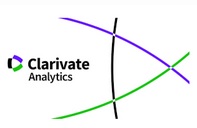Anticipatory fatigue effects and emotional symptoms in the perception of physical and cognitive fatigue
Abstract
Objectives: To analyze the effects of anticipatory fatigue and emotional symptomatology on the physical and cognitive perception of fatigue. The conditional and partial effects of independent variables were analyzed by multivariate and univariate analyses in an ex- post-fact and correlational method. Sample was composed of 317 participants (29% come from clinical population). Anticipatory fatigue, and perception of fatigue (by the Chalder et al.´s Fatigue Scale) were measured. Emotional symptoms were assessed by Goldberg´s questionnaire, GHQ-28. Anticipatory fatigue and emotional symptoms (mainly depressive symptoms) had significant effects on the cognitive and physical fatigue. The anticipatory fatigue moderated the effects between group (clinical versus general) and cognitive fatigue. Emotional symptoms (mainly depressive symptoms) and anticipatory fatigue made an important contribution to the cognitive and physical fatigue. However, the contribution of the anticipatory fatigue was no longer significant when the emotional symptoms were considered. It suggests the mediational role of the symptoms between anticipatory fatigue and perception of fatigue.
Downloads
References
American Psychiatric Association. (2000). Diagnostic and Statistical Manual of Mental Disorders, Text Revision. DSM-IV-TR. Diagnostic and Statistical Manual of Mental Disorders – 4th Ed (Vol. 4). Washington DC: APA. doi:10.1001/jama.285.6.811
Autor (2015). Perceived Experience of Fatigue in Clinical and General Population: Descriptors and Associated Reactivities. Spanish Journal of Psychology, 18, 1-8
Autor (2016). Mediating role of emotional symptomatology between anticipatory fatigue and the perception of fatigue. Psicothema, 28(2), 187-193
Barlow, D. (2002). Anxiety and Its Disorders. The Nature and Treatment of Anxiety and Panic (2nd ed.). New York: Guilford Press.
Brown, L., & Kroenke, K. (2009). Cancer-Related Fatigue and Its Associations With Depression and Anxiety: A Systematic Review. Psychosomatics, 50, 440–447.
Cella, M., & Chalder, T. (2010). Measuring fatigue in clinical and community settings. Journal of Psychosomatic Research, 69(1), 17–22.
Chalder, T., Berelowitz, G., Pawlikowska, T., Watts, L., Wessely, S., Wright, D., & Wallace, E. P. (1993). Development of a fatigue scale. Journal of Psychosomatic Research, 37, 147–153. doi:10.1016/0022-3999(93)90081-P
Chaudhuri, A., & Behan, P. O. (2004). Fatigue in neurological disorders. Lancet, 363, 978–988. doi:10.1016/S0140-6736(04)15794-2
Cohen, J. (1988). Statistical power analysis for the behavior sciences. New York: Lawrence Earlbaum Associates.
Demyttenaere, K., De Fruyt, J., & Stahl, S. M. (2005). The many faces of fatigue in major depressive disorder. The International Journal of Neuropsychopharmacology / Official Scientific Journal of the Collegium Internationale Neuropsychopharmacologicum (CINP), 8, 93–105. doi:10.1017/S1461145704004729
Doyle, F., Conroy, R., McGee, H., & Delaney, M. (2010). Depressive symptoms in persons with acute coronary syndrome: Specific symptom scales and prognosis. Journal of Psychosomatic Research, 68, 121–130. doi:10.1016/j.jpsychores.2009.07.013
Elosua, P., & Zumbo, B.D. (2008). Reliability coefficients for ordinal response scales. Psicothema, 20(4), 896-901.
Failde, I., & Ramos, I. (2000). Validity and reliability of the SF-36 Health Survey Questionnaire in patients with coronary artery disease. Journal of Clinical Epidemiology, 53(4), 359–365.
Goldberg, D. (1996). Cuestionario de Salud General de Goldberg. Barcelona: Masson.
Goldstein, A. N., Greer, S. M., Saletin, J. M., Harvey, A. G., Nitschke, J. B., & Walker, M. P. (2013). Tired and apprehensive: anxiety amplifies the impact of sleep loss on aversive brain anticipation. The Journal of Neuroscience : The Official Journal of the Society for Neuroscience, 33, 10607–15. doi:10.1523/JNEUROSCI.5578-12.2013
Hayes, A. (2013). Introduction to mediation, moderation, and conditional process analysis. New York, NY: Guilford.
Heins, M., Knoop, H., Nijs, J., Feskens, R., Meeus, M., Moorkens, G., & Bleijenberg, G. (2013). Influence of symptom expectancies on stair-climbing performance in chronic fatigue syndrome: Effect of study context. International Journal of Behavioral Medicine, 20, 213–218. doi:10.1007/s12529-012-9253-2
Helbig-Lang, S., Lang, T., Petermann, F., & Hoyer, J. (2012). Anticipatory Anxiety as a Function of Panic Attacks and Panic-Related Self-Efficacy: An Ambulatory Assessment Study in Panic Disorder. Behavioural and Cognitive Psychotherapy, 40, 590–604. doi:10.1017/S1352465812000057
Hollingshead, A. A. (1975). Five Factor Index of Social Position. New Haven, CT: Unpublished manuscript, Yale University.
Kluger, B. M., Krupp, L. B., & Enoka, R. M. (2013). Fatigue and fatigability in neurologic illnesses: Proposal for a unified taxonomy. Neurology, 80, 409–416. doi:10.1212/WNL.0b013e31827f07be
Koval, P., Kuppens, P., Allen, N. B., & Sheeber, L. (2012). Getting stuck in depression: The roles of rumination and emotional inertia. Cognition & Emotion, 1–16. doi:10.1080/02699931.2012.667392
Lindeberg, S. I., Rosvall, M., & Östergren, P. O. (2012). Exhaustion predicts coronary heart disease independently of symptoms of depression and anxiety in men but not in women. Journal of Psychosomatic Research, 72, 17–21. doi:10.1016/j.jpsychores.2011.09.001
Lo, C. S. L., Ho, S. M. Y., & Hollon, S. D. (2008). The effects of rumination and negative cognitive styles on depression: A mediation analysis. Behaviour Research and Therapy, 46, 487–495. doi:10.1016/j.brat.2008.01.013
Nitschke, J. B., Sarinopoulos, I., Oathes, D. J., Johnstone, T., Whalen, P. J., Davidson, R. J., & Kalin, N. H. (2009). Anticipatory activation in the amygdala and anterior cingulate in generalized anxiety disorder and prediction of treatment response. The American Journal of Psychiatry, 166, 302–310. doi:10.1176/appi.ajp.2008.07101682
Priebe, S., Fakhoury, W. K. H., & Henningsen, P. (2008). Functional incapacity and physical and psychological symptoms: How they interconnect in chronic fatigue syndrome. Psychopathology, 41, 339–345. doi:10.1159/000152375
Rief, W., Glombiewski, J. A., Gollwitzer, M., Schubö, A., Schwarting, R., & Thorwart, A. (2015). Expectancies as core features of mental disorders. Current Opinion in Psychiatry, 28(5), 378–385.
Robinson, R. G., & Price, T. R. (1982). Post-stroke depressive disorders: a follow-up study of 103 patients. Stroke, 13(5), 635–641.
Rochat, L., Billieux, J., & Van der Linden, M. (2012). Difficulties in disengaging attentional resources from self-generated thoughts moderate the link between dysphoria and maladaptive self-referential thinking. Cognition & Emotion, 26, 748–757. doi:10.1080/02699931.2011.613917
Ruscio, A. M., Seitchik, A. E., Gentes, E. L., Jones, J. D., & Hallion, L. S. (2011). Perseverative thought: A robust predictor of response to emotional challenge in generalized anxiety disorder and major depressive disorder. Behaviour Research and Therapy, 49, 867–874. doi:10.1016/j.brat.2011.10.001
Sáez-Francàs, N., Hernández-Vara, J., Corominas Roso, M., Alegre Martín, J., & Casas Brugué, M. (2013). The association of apathy with central fatigue perception in patients with Parkinson’s disease. Behavioral Neuroscience, 127, 237–44. doi:10.1037/a0031531
Schnur, J. B., Hallquist, M. N., Bovbjerg, D. H., Silverstein, J. H., Stojceska, A., & Montgomery, G. H. (2007). Predictors of expectancies for post-surgical pain and fatigue in breast cancer surgical patients. Personality and Individual Differences, 42, 419–429. doi:10.1016/j.paid.2006.07.009
Silver, A., Haeney, M., Vijayadurai, P., Wilks, D., Pattrick, M., & Main, C. J. (2002). The role of fear of physical movement and activity in chronic fatigue syndrome. Journal of Psychosomatic Research, 52, 485–493. doi:10.1016/S0022-3999(01)00298-7
The works published in this journal are subject to the following terms:
1. The Publications Service of the University of Murcia (the publisher) retains the property rights (copyright) of published works, and encourages and enables the reuse of the same under the license specified in paragraph 2.
© Servicio de Publicaciones, Universidad de Murcia, 2022
2. The works are published in the online edition of the journal under a Creative Commons Reconocimiento-CompartirIgual 4.0 (legal text). You can copy, use, distribute, transmit and publicly display, provided that: i) you cite the author and the original source of publication (journal, editorial and URL of the work), ii) are not used for commercial purposes, iii ) mentions the existence and specifications of this license.
This work is licensed under a Creative Commons Attribution-ShareAlike 4.0 International License.
3. Conditions of self-archiving. Is allowed and encouraged the authors to disseminate electronically pre-print versions (version before being evaluated and sent to the journal) and / or post-print (version reviewed and accepted for publication) of their works before publication, as it encourages its earliest circulation and diffusion and thus a possible increase in its citation and scope between the academic community. RoMEO Color: Green.















